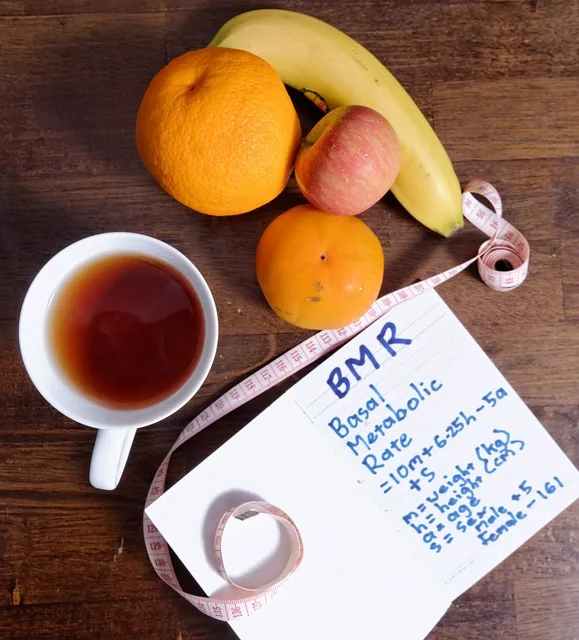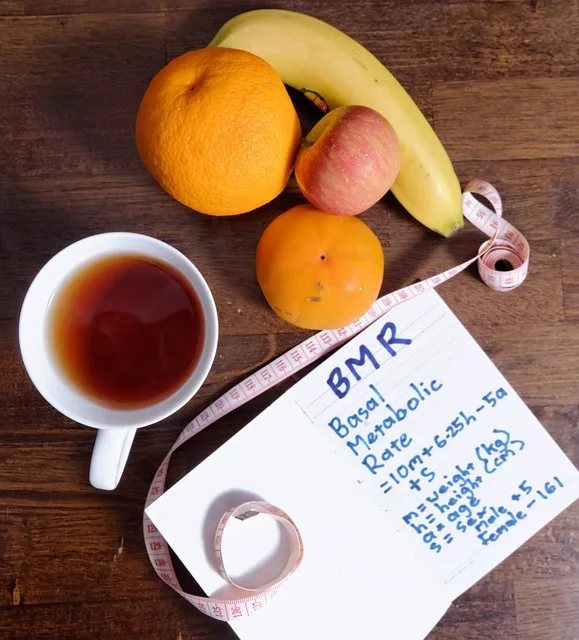Brisk Walking is a good way for you to increase your activity level, or to ease yourself into a more active lifestyle. Brisk walking is a free and one of the easiest and most effective cardio workout, lose weight and get healthy.
Sometimes overlooked as exercise, this exercise can help you build stamina, burn extra calories, and be heart-healthy.
What is Brisk Walking?
Brisk walking is a form of moderate-intensity physical activity that involves walking at a pace that is faster than a leisurely stroll, but not so fast that it becomes difficult to talk or carry on a conversation. Generally, brisk walking is considered to be walking at a pace of 3 to 4.5 miles per hour, or about 4.8 to 7.2 kilometers per hour.
Benefits of Brisk Walking
Since you will be doing sprint variations on SMIT training days, the functional-spectrum training does not recommend light running as a steady-state cardio alternative. This is not to say that doing some light roadwork is a bad thing; It’s only to focus on a low-impact version of steady-state cardio that reduces the risk of overuse injury and helps you improve your recovery from intense workouts.
Brisk walking for 25-45 minutes daily burns a lot more calories than regular walking. You can lose up to 100 -150 kcal with just 30 minutes of brisk walking. The best part is that the more speed you gain and the longer you walk, the faster the weight loss.
Unlike other forms of exercise, it has a low risk of injury and is a low-cost activity. When you do a brisk walk several times per week, you may experience health benefits, such as a drop in blood pressure and a decreased risk of developing type 2 diabetes.
With brisk walking, you increase your heart rate, that is, better blood circulation and strengthen the muscles of the body. Brisk walking is the best preventive measure against heart diseases and other concomitant diseases. Studies have also shown that regular jogging is effective in reducing the level of bad cholesterol in the body.
Running involves a high range of motion in your arms and legs, so is very useful for the joints. As you increase the speed and duration of your walk, you will also build more muscle. Together, these benefits of brisk walking help you perform better physically and increase your stamina. This will make the body more flexible over time because you are actually working the muscles without any external resistance. By doing brisk walking regularly, you remain energetic throughout the day.
You are out in the open, in the fresh air and moving your body. All these factors affect the way you feel thereby releasing endorphins or happy hormones which enhance the state of mind and keep you in a good mood.
Studies show that a few minutes of brisk walking every day can help individuals suffering from mental health issues such as depression and anxiety. It is also known to help you think clearly and focus more on what you do.
All the nutrients that help your joint cartilage get nourishment and oxygen from the fluid around it. There is no direct blood flow to the cartilage that cushions and protects the joints. This means that the movement of fluids around them is vital to keeping them well nourished.
The benefits of brisk walking for the joints come from the compression of the cartilage as a result of the fast and large movement. This allows nutrients and oxygen to flow to the area while keeping the joints healthy.
Brisk walking involves improving your overall state of mind, which can help you fall asleep faster. High physical activity helps you regulate the sleep cycle in general. Walking is a great solution for people suffering from problems like insomnia or disturbed sleep.
This exercise not only works for the limbs but also puts some pressure on the lungs as they need to support this strenuous activity. It increases overall lung capacity, improves breathing.
Brisk Walking Technique and Common Mistake
Brisk walking techniques as part of a regular running workout, when you are first changing your technique, gradually increase your time.
Walk outside or on a treadmill at a brisk pace, about 2.5 to 3 miles per hour (mph), for 25 to 35 minutes.
Technique
- Start slowly to warm up, and cool down by slowing down.
- Start adding hills to your walks gradually, roll the foot forward from the heel.
- Don’t take small, snappy steps; Take every step thoroughly.
- The correct way is to engage the whole body by keeping your head up, your arms, elbows preferably locked while walking from heel to toe. Keep your shoulders down and relaxed while maintaining a long, straight back and be sure to engage your core.
- To reap maximum health benefits of this, it is essential to keep a brisk pace compared to a leisurely walk.
- The pace may not match another person’s, but find a pace that helps you sweat and get your heart rate up. This way you will be sure to get the most out of brisk walking.
Speeds
The Centers for Disease Control and Prevention (CDC) defines moderate-intensity aerobic activity as anything that causes a person to sweat and increase their heart rate to such an extent that they can talk but not sing.1
As a rule, for a person to walk fast, he needs to walk at a maximum speed of 4.5 mph. A person should aim to walk briskly for at least 25 minutes every day.
Following are the average brisk walking speeds of the person with different age groups and sex2:
| Age group (age in years) | Male | Female |
|---|---|---|
| 20 to 29 | 3.04 mph | 3.00 mph |
| 30 to 39 | 3.20 mph | 3.00 mph |
| 40 to 49 | 3.20 mph | 3.11 mph |
| 50 to 59 | 3.20 mph | 2.93 mph |
| 60 to 69 | 3.00 mph | 2.77 mph |
| 70 to 79 | 2.82 mph | 2.53 mph |
| 80 to 89 | 2.17 mph | 2.10 mph |
Common Mistake
The most important step to consider when walking briskly is speed. According to the Centers for Disease Control and Prevention (CDC), brisk walking at a pace of 100 steps per minute should be taken. Make sure you do your walking at a pace of 100 steps per minute.
You may have noticed that while walking, your arms swing at the center line of the body or that the arm movement is at chest level. This is the wrong technique of walking fast, while rotating the arms, bend the elbows at 90 degrees and leave the hand loose.
You are probably rotating the waist from side to side without using force. This mostly happens when you want to run fast. But while walking fast, you need to control the waist so that it does not move from side to side.
If you’re looking down while the shoulders are tense or bent forward, it can cause tension in the neck, groin, back, and shoulders. Your shoulders should be relaxed, so that you do not put pressure on the neck while walking and look ahead.
Keep your back straight while walking. When walking, focus on lengthening the spine rather than twisting it. Try to avoid bending over, hunching and leaning forward and keep the back straight.
Well, when it comes to running it’s all about the feet! Moving at a brisk pace, you should turn the feet towards the toes, and push off with the ball of the feet. Lift the leg forward and keep the thigh flexed at the hip.
Brisk Walking Calories Burned
The number of calories burned when brisk walking depends primarily on the weight and speed of the walk.
The faster you walk and the more weight you weigh, the more calories you expend. Other factors that affect the number of calories burned include terrain, outdoor/indoor temperature, and age and gender.
| 2.0 mph (3.2 kph) | Calories burned |
|---|---|
| 120 pounds (55 kg) | 154 |
| 150 pounds (68 kg) | 190 |
| 180 pounds (82 kg) | 230 |
| 210 pounds (95 kg) | 266 |
| 240 pounds (109 kg) | 305 |
| 270 pounds (123 kg) | 344 |
| 300 pounds (136 kg) | 381 |
| 2.5 mph (4.0 kph) | Calories burned |
|---|---|
| 120 pounds (55 kg) | 165 |
| 150 pounds (68 kg) | 204 |
| 180 pounds (82 kg) | 246 |
| 210 pounds (95 kg) | 285 |
| 240 pounds (109 kg) | 327 |
| 270 pounds (123 kg) | 369 |
| 300 pounds (136 kg) | 408 |
| 3.0 mph (4.8 kph) | Calories burned |
|---|---|
| 120 pounds (55 kg) | 193 |
| 150 pounds (68 kg) | 238 |
| 180 pounds (82 kg) | 287 |
| 210 pounds (95 kg) | 333 |
| 240 pounds (109 kg) | 382 |
| 270 pounds (123 kg) | 431 |
| 300 pounds (136 kg) | 476 |
| 3.5 mph (5.6 kph) | Calories burned |
|---|---|
| 120 pounds (55 kg) | 237 |
| 150 pounds (68 kg) | 292 |
| 180 pounds (82 kg) | 353 |
| 210 pounds (95 kg) | 401 |
| 240 pounds (109 kg) | 469 |
| 270 pounds (123 kg) | 529 |
| 300 pounds (136 kg) | 585 |
| 4.0 mph (6.4 kph) | Calories burned |
|---|---|
| 120 pounds (55 kg) | 275 |
| 150 pounds (68 kg) | 340 |
| 180 pounds (82 kg) | 451 |
| 210 pounds (95 kg) | 475 |
| 240 pounds (109 kg) | 545 |
| 270 pounds (123 kg) | 615 |
| 300 pounds (136 kg) | 680 |
Note: Several studies confirm that brisk walking promotes weight loss, especially when combined with a low-calorie diet.
When and how to incorporate
Brisk walking can be incorporated into your daily routine in many different ways. Here are some suggestions:
- Walking as a mode of transportation: If you live close enough to your workplace or other regular destinations, consider walking instead of driving or taking public transportation. This can be a great way to incorporate brisk walking into your daily routine without requiring any extra time.
- Walking during breaks: Take a brisk walk during your lunch break or other breaks during the workday. This can help you get some fresh air, increase your energy levels, and help you focus better when you return to work.
- Walking as a social activity: Brisk walking can be a fun and social activity to do with friends or family members. Schedule regular walks with others to help keep you motivated and on track.
- Walking for errands: Try to incorporate walking into your errands by walking to the grocery store, post office, or other nearby destinations instead of driving.
- Walking for leisure: Make walking a regular part of your leisure time activities by taking a brisk walk around your neighborhood, a nearby park, or other scenic areas.
- Set a schedule: Make a plan to walk at the same time each day, such as in the morning before work, during lunchtime, or in the evening after dinner. This can help make it a regular habit and easier to stick to.
- Start small: If you’re new to exercise, start with short walks and gradually increase the time and distance as you build up your fitness level. Even a 10-minute brisk walk can be beneficial, and you can slowly increase the time over a period of weeks or months.
- Mix it up: Try to vary the route and terrain of your walks to keep things interesting. This can also help challenge your muscles in different ways and prevent boredom.
- Use proper form: Make sure you’re using good posture and walking technique to maximize the benefits of your workout. Keep your head up, shoulders back, and arms swinging naturally at your sides.
- Stay motivated: Set goals for yourself, track your progress, and reward yourself for reaching milestones. Consider joining a walking group or using a fitness app to help keep you motivated and accountable.
- Centers for Disease Control and Prevention (CDC). “Measuring Physical Activities Intensity.” Available here: https://www.cdc.gov/physicalactivity/basics/measuring/index.html[↩]
- August 10, 2011. doi: 10.1371/journal.pone.0023299. “Association between Walking Speed and Age in Healthy, Free-Living Individuals Using Mobile Accelerometry—A Cross-Sectional Study.” Michaela Schimpl, Carmel Moore, Christian Lederer, Anneke Neuhaus, Jennifer Sambrook, John Danesh, Willem Ouwehand, Martin Daumer. Available here: https://journals.plos.org/plosone/article?id=10.1371/journal.pone.0023299.[↩]
















Thanks a lot for sharing such a great piece of article! I found it a good helpful write-up with a good sound and explanation. Here I have seen some valuable ideas that are definitely helpful for every fitness enthusiast and a health-conscious person who wants to create a healthy lifestyle. Please keep sharing more updates!